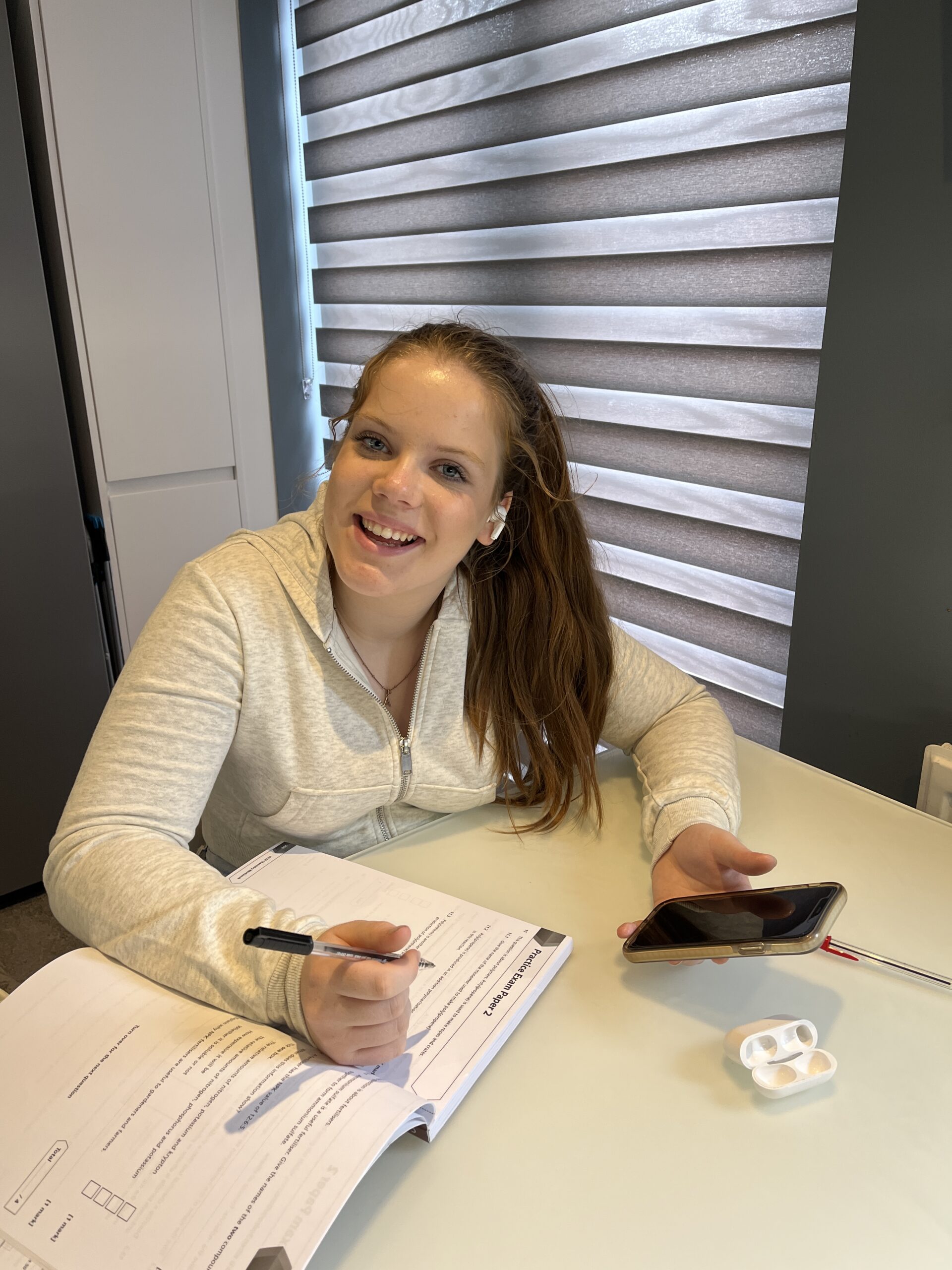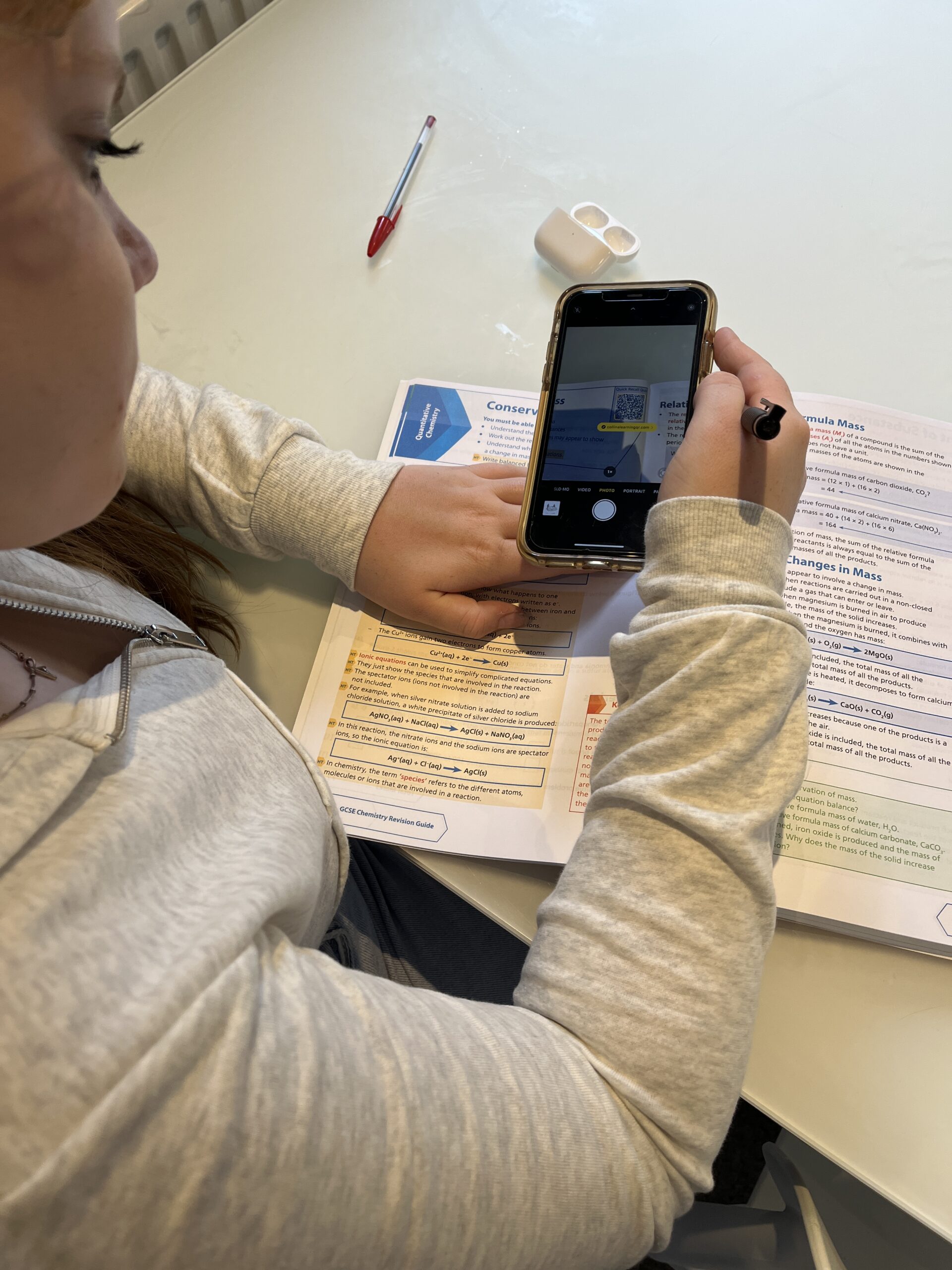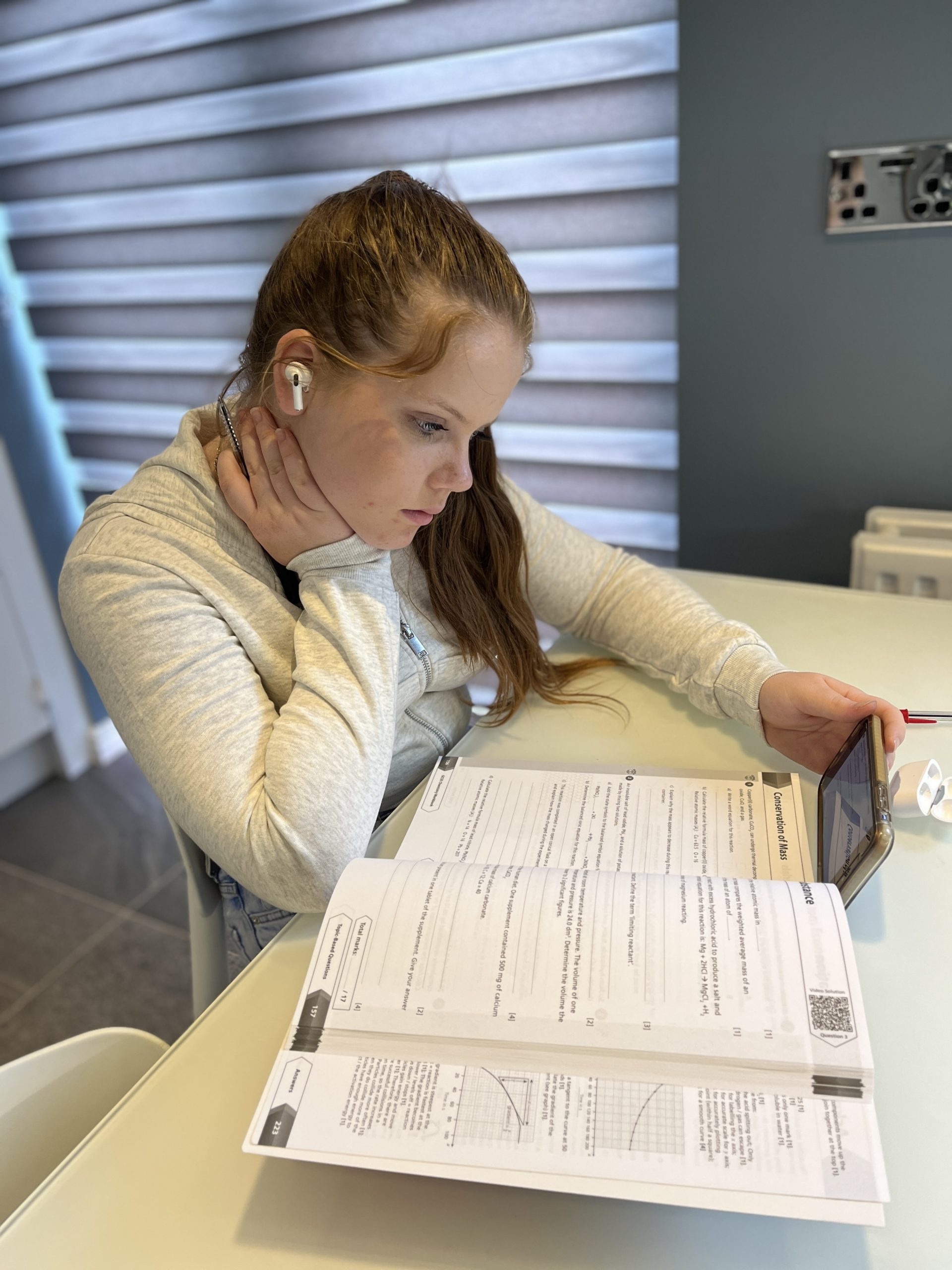Who is your worst critic? Well, for me, it is my daughter Annie. She is exactly the target audience for the Collins Complete Revision & Practice series; I was lucky to be commissioned to work on the series. Last August, I had the excitement to re-draft the print edition of the AQA GCSE 9-1 Chemistry book, as well as adding multiple choice quizzes and instructional videos to help students better understand exam technique.

So, Annie being a typical 14-year-old, consumes videos on all platforms from YouTube to Instagram. After a day feverously working on recording myself and editing just one exam question, I was super proud of myself. This is the first time that I had ever recorded myself and after teaching during lockdown I had emergent skills on this front. So, I sent the work off to Collins with a slightly gloating email celebrating my success.
Mistake! Just before family dinner (fail: Annie was somewhat hangry), I showed her the fruit of my labour – my beautiful video of an exam question. Ouch! The honesty of the end consumer was eye-watering with comments about hearing the tapping of the keyboard, to using an outdated programme to record and let’s not even go there with the voiceover. I was initially shocked and then worked super hard on Sunday, putting into practice all her ‘advice’, and you know what, it made a difference. I showed her the re-work and she said it was ‘good’, praise indeed from a teenager!
The revision guide is now a go-to for Annie, as she has just completed the first year of her AQA GCSE Chemistry studies. We have a physical copy and can use the ebook version on her tablet if she is too lazy to root around her messy bedroom to find the book! Currently, Annie is not using it to revise from, but she is using it as a course companion. The top three ways she is using it are:
-
-

Scan the QR code for multiple choice questions to pop-up for quick testing After a science lesson Annie comes home and scans the QR code in the revision guide section of the book and tries the multiple-choice quick recall quiz that pops up. This gives her a litmus test as to whether she has understood the topic and if she needs to do some more learning. If she gets all the questions correct, she knows that she has understood the topic. This has a real feel-good effect, and the low-stakes testing can improve confidence levels. On occasion, she will drop a few marks, so she reads the revise section to plug any gaps. Sometimes she will also make her own flashcards of the key information that she missed. Then just to make sure, she completes the quick test at the end of each page to reassure herself that she now has a good understanding of the topic.
- At the end of topics, like many GCSE students, Annie has a topic test in class. To help her revise she turns to the practice questions to check that she still has a good understanding of the topic area. If she is struggling, she again returns to the revise section to re-activate her previous understanding.
-
- Preparing for past paper questions in homework or topic tests, Annie uses the workbook questions. She doesn’t just complete them all, she focuses on the question that is featured in the video linked through the QR code. Annie uses a three-step process:
- Initially she tries the question using her own knowledge, in black pen, timing herself to give one minute per mark. This gives a real feeling for how long you have in the test to complete a similar question.
- Annie then changes to use blue pen and uses the revision section of the book to check through her answers and make any changes that she would like.
- Finally, she watches the video and, coupled with the mark scheme, she assesses her own learning. If she gets a high mark from the black writings, Annie knows that she has learnt and understood the work. But if the initial attempt had a low mark and the blue text has a high mark, then she concludes that although she understands the work, she has yet to learn it all. If, however, she gets low marks in both, this shows a lack of understanding and she can use the revise section and ask for help from her teachers.
The last part of Annie’s performance evaluation is reflecting on the mark scheme to see if she is writing too much and whether a key phrase or word would have given the same marks as full prose. This allows her to use her time wisely in exams and reduce the waffle.
What is also nice about the book is that it’s easy to navigate with colour-coded pages which are easy to find. There is a variety of activities with a fabulous addition of tick boxes in the contents page, which allows Annie (and me!) to track her progress through the course. The book will see her through the whole course as, when she is on her run up to the all-important GCSEs, there are two practice exam papers at the end. So, on reflection, time to get online and order the rest of the series to help her out with her other GCSEs!
 Sam Holyman is Lead teacher of Science and STEM in Coventry, and formerly West Midlands ASE President. She is also the author of a number of best-selling science textbooks for Secondary Science Teaching (including the Collins AQA GCSE 9-1 Chemistry Complete Revision & Practice), and a keen advocate of innovative teaching and learning.
Sam Holyman is Lead teacher of Science and STEM in Coventry, and formerly West Midlands ASE President. She is also the author of a number of best-selling science textbooks for Secondary Science Teaching (including the Collins AQA GCSE 9-1 Chemistry Complete Revision & Practice), and a keen advocate of innovative teaching and learning.
Complete Revision & Practice provides a revision guide, workbook and practice paper in one book, now with interactive recall quizzes, updated practice questions and video solutions.
Find out more about GCSE 9-1 Complete Revision & Practice



